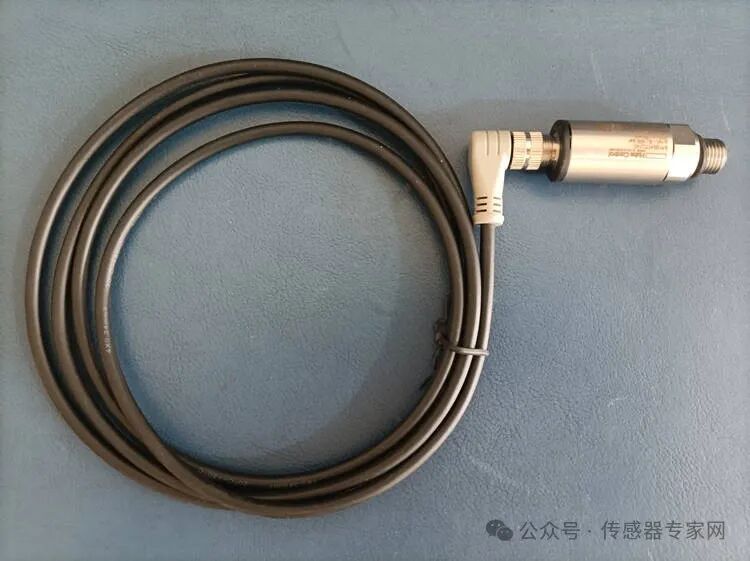
For more in-depth information, reports, and knowledge about sensor technology, sensor testing technology, IoT sensor technology, etc., please follow the Sensor Expert WeChat public account and set it as a star to view past content.
1. Introduction
In modern industry, scientific research, and daily life, pressure sensors play an irreplaceable role as an important measurement tool. They can convert the pressure or pressure changes experienced by an object into electrical signals, facilitating monitoring, control, or data collection. This article will detail the basic principles, classifications, applications, and selection principles of pressure sensors, helping readers better understand and apply this technology.

2. Basic Principles of Pressure Sensors
The working principle of pressure sensors is mainly based on physical effects such as resistance, capacitance, inductance, or semiconductors. When external pressure is applied to the sensor, the elastic element inside the sensor deforms, causing changes in physical quantities such as resistance, capacitance, and inductance. The sensor then converts these changes into electrical signals for subsequent processing and analysis.
Specifically, the working principles of pressure sensors can be divided into the following types:
-
Piezo-resistive Effect: When a material is subjected to pressure, its resistance value changes. Piezo-resistive pressure sensors are typically made from semiconductor materials and measure pressure indirectly by measuring changes in resistance.
-
Piezoelectric Effect: Certain materials generate electric charges when subjected to pressure. Piezoelectric pressure sensors utilize this effect to convert pressure into electrical signals. These sensors are usually made from crystal or ceramic materials.
-
Capacitive Effect: A capacitor is formed between two conductors separated by an insulating medium. When pressure is applied between the two conductors, the distance between them changes, leading to a change in capacitance. Capacitive pressure sensors utilize this effect to measure pressure.
3. Classifications of Pressure Sensors
Based on working principles and structural characteristics, pressure sensors can be classified into various types:
-
Piezo-resistive Pressure Sensors: Based on the strain effect, made from semiconductor materials, suitable for measuring dynamic pressure.
-
Piezoelectric Pressure Sensors: Based on the piezoelectric effect, made from crystal or ceramic materials, suitable for measuring static pressure.
-
Capacitive Pressure Sensors: Based on the capacitive effect, typically consisting of two conductors and an insulating medium, suitable for measuring micro-pressure.
-
Fiber Optic Pressure Sensors: Utilize the light transmission characteristics of optical fibers to convert pressure signals into optical signals for measurement.
Additionally, based on their applications, pressure sensors can be divided into pressure monitoring sensors, pressure measurement sensors, and pressure control sensors. According to the power supply method, they can be classified into piezo-resistive and piezoelectric sensors, with the former requiring an external power supply and the latter generating charge on its own without an external power source.
4. Applications of Pressure Sensors
The application range of pressure sensors is very broad, covering various fields such as industry, machinery, aerospace, environment, transportation, food, home appliances, and energy. Here are some typical application scenarios:
-
Industrial Automation: In hydraulic systems, pressure sensors can monitor the pressure of hydraulic oil in real-time, ensuring the system operates within normal ranges. Through feedback control, the pump’s operating state can be adjusted in a timely manner, improving production efficiency and safety.
-
Mechanical Engineering: In monitoring and maintaining mechanical equipment, pressure sensors can monitor pressure changes experienced by the equipment during operation in real-time, assisting engineers in fault analysis and predictive maintenance.
-
Aerospace: During flight, aircraft experience different atmospheric pressure changes, and pressure sensors can be used to monitor the pressure difference inside and outside the cabin, ensuring passenger safety and comfort. During the launch of rockets and spacecraft, pressure sensors can monitor the pressure of fuel and oxidizers in real-time, ensuring the normal operation of the propulsion system.
-
Environmental Monitoring: In meteorological monitoring, barometric pressure sensors can be used to measure changes in atmospheric pressure, helping meteorologists predict weather changes. In water resource management, pressure sensors can monitor the water level and pressure in pipes or reservoirs, ensuring the rational use and management of water resources.
-
Transportation: The tire pressure monitoring system in cars is a typical example, where pressure sensors can monitor tire pressure in real-time to ensure driving safety. In rail transport such as trains and subways, pressure sensors can be used to monitor the pressure of braking systems, ensuring the safe operation of trains.
5. Selection Principles for Pressure Sensors
When selecting pressure sensors, the following factors need to be considered:
-
Measurement Purpose: First, clarify whether the measurement is for air pressure, hydraulic pressure, or mechanical pressure, as well as the required measurement accuracy.
-
Range Selection: Choose an appropriate range based on actual pressure to avoid sensor overload damage. Within the allowable accuracy range, a sensor with a slightly larger range can be selected to increase safety.
-
Installation Method: Select the most reasonable installation method based on on-site usage requirements. If it needs to be used with tooling, a tension-compression type pressure sensor can be selected; if only measuring pressure without additional tooling or pressure heads, a pure pressure type pressure sensor will suffice.
-
Sensor Size: Choose a reasonable sensor size based on the available installation space. If the installation space is limited, a small-sized pressure sensor can be selected; if there are no space requirements, a larger sensor can be chosen to ensure accuracy and consistency.
-
Operating Environment: Consider factors such as temperature, humidity, and vibration in the operating environment, and select sensors with strong adaptability. For example, in high-temperature environments, high-temperature pressure sensors should be selected.
-
Cost Budget: Consider the cost budget while meeting performance requirements, and choose sensors with a high cost-performance ratio.
6. Conclusion
As an important measurement tool, pressure sensors play an irreplaceable role in modern industry, scientific research, and daily life. By understanding their basic principles, classifications, applications, and selection principles, we can better apply this technology to improve production efficiency, ensure safety, and promote the development of various industries. With the continuous advancement of technology, it is believed that pressure sensor technology will become more advanced and its application fields will become even broader.
Starred content = what you care about, according to the WeChat public account recommendation principle, if you do not set the Sensor Expert WeChat public account homepage as a star, you will not be able to receive the latest information in the sensor industry in a timely manner!
Disclaimer:This article is reproduced for the purpose of conveying more information. If there are any errors in source attribution or infringement of your legal rights, please contact us, and we will correct or delete it promptly. Thank you.
If you have submission or interview needs, please email:[email protected].Recommended Reading:
- China’s Sensors Depend on You! Summary of Sensor Research Information from 30 Top Universities
- Finally Understood, Modern Warfare is All About Sensors
- China’s Chip Tycoon Actually Comes from Sensors
- Woke Up to Find Chinese Companies Can’t Design Sensors?!








